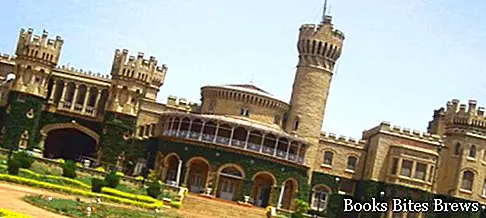What to see in Bangalore, itinerary of the places to visit including the main attractions and the historical monuments of greatest interest absolutely not to be missed.
Tourist information
Bangalore has reinvented itself by transforming itself into a cosmopolitan city, with hotels, restaurants, bars and shops, to rival the other main Indian cities.
Despite this rapid evolution, Bangalore has kept unchanged its ancient charm visible in the decorated temples, ancient buildings, peaceful gardens and very lively street markets.
Capital of the state of Karnataka, Bangalore is considered the technological hub of India and, despite this, the oldest traditions of Indian culture remain alive.
The main attractions and places of historical interest are located south of the city market, in stark contrast with the modern buildings of the rest of the city, but the contrast between old and new enhances the former and enriches the latter, giving the whole together a profound cultural identity.
What see
The Bangalore Palace, located in the north of the city, was built in the 1880s during the British Raj period as a reproduction of Windsor Castle, complete with granite towers, turrets, Gothic windows and battlements.
Mainly built in wood, it boasts splendid sculptures and paintings.
It was purchased by the descendants of the royal dynasty, Wodeyars of Mysore, and part of the family still lives here.
Dating from the sixteenth century, the Bull Temple contains a giant granite monolith, depicting a sacred bull called Nandi.
A large number of faithful visit the huge monolithic statue of the bull sitting every day.
There are often prayer meetings, musicians and wedding processions to be seen.
Recommended readings- India: useful information
- Mumbai (India): what to see in old Bombay
- Bangalore (India): what to see in the capital of Karnataka
- New Delhi (India): what to see in the capital
- Calcutta (India): what to see in the city of Mother Teresa
The Iskon temple, which is located about 8 km north-west of the city, has a shiny, modern and richly decorated appearance.
Iskon is an acronym for the International Society of Krishna Consciousness, also known as Hare Krishna.
Inside it is equipped with a multimedia cinema that projects films related to the Hare Krishna movement.
Lalbagh, a name that means red garden, is a botanical garden located 4 km south of the city center, characterized by a huge band of red roses.
The gardens, created in the eighteenth century by Hyder Ali and his son Tipu Sultan, contain many trees dating back to that time, there are also rare tropical plants and a greenhouse created using the Crystal Palace in London as a model.
Tippu Sultan’s Fort is a stone fortress built by Tipu Sultan, built on the site where a previous building made of brick and mud once stood.
Much of it, destroyed during the wars with the British, has never been restored.
Tipu Sultan's Summer Palace is a wooden construction including remarkable teak pillars, where unfortunately most of the remarkable pictorial decoration has disappeared.
In the Vishana Soudha, an imposing building in Bangalore built in 1954 in the ancient Dravidian style and completed with onion-shaped domes, the Secretariat and the State Legislature are housed.




